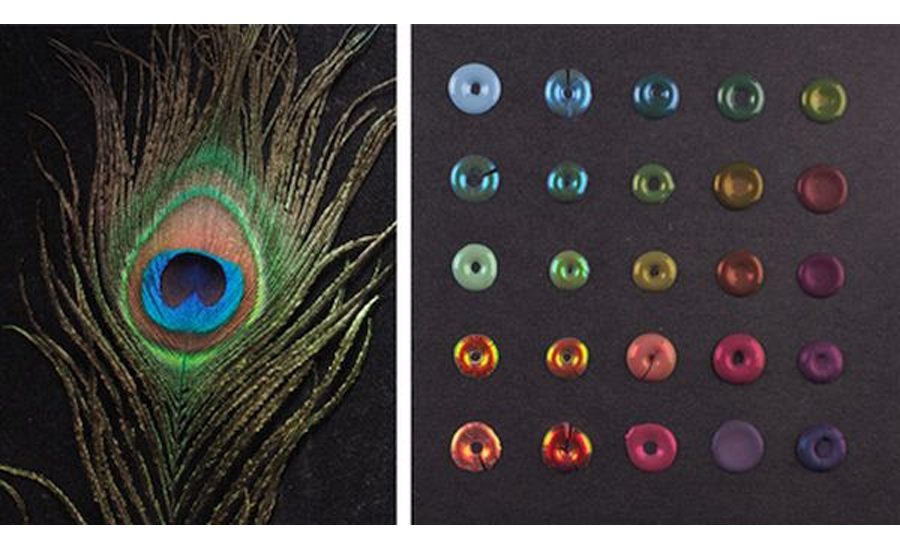Peacock Feathers Inspire Possible Innovation in Anti-Counterfeit Coatings




TSUKUBA, Japan - Melanin-like compounds can be precisely designed and arranged to color materials using a mechanism similar to that found in a peacock's feathers. Chemist Michinari Kohri of Chiba University in Japan reviewed the latest research on these “melanin-mimetic materials” and their potential applications for the journal Science and Technology of Advanced Materials.
Melanin and melanin-like compounds absorb some of the light that is scattered from the microstructures within materials. Scientists are finding ways to control this phenomenon to give a variety of iridescent and non-iridescent colors. Melanin is a dark pigment that gives color to hair and skin. It is also essential for the bright colors we see in some organisms. When light interacts with the structures of feathers, wings and shells of many organisms, like peacocks, butterflies and jewel beetles, it is scattered, appearing white. But when melanin is interspersed within these structures, some of the scattered light is absorbed, producing various colors. Scientists are looking for ways to mimic these so-called “structural color” changes of living organisms in synthetic materials.
"Vivid structural colors can be obtained by constructing microstructures containing a light-absorbing black material made of natural or artificial melanin," said Kohri. "Research in this area is progressing rapidly worldwide."
A leading contender is a compound called polydopamine. It is made of a material naturally found in the body, so it is biocompatible. It is also dark, so it absorbs light like melanin. Scientists found they could control polydopamine's iridescence — how much the color changes as the angle of light hitting it shifts, similar to a peacock's feather. They achieved this by altering the particle size or by adding compounds that react to a magnetic field.
Scientists are also investigating particles formed of a polystyrene core and a polydopamine shell. Changing the diameter of the inner core, for example, leads to different colors. Making the polydopamine shell thicker causes the particles to be less closely packed, leading to non-iridescent structural color, which remains the same regardless of the light angle. Scientists have also toyed with controlling color and angle-dependence by changing the shapes of polystyrene/polydopamine particles, making them hollow on the inside, and adding multiple coatings to the external shell.
Polydopamine particles are showing potential for a variety of applications. For example, they can be used as inks to dye fabrics or in cosmetics. They could help prove a product is real versus counterfeit by shifting color with strong light, wetting or temperature changes. Finally, scientists have found that adding these particles to rubber causes it to change color when stretched or relaxed, which could be useful for sensing local stress and strain in bridges.
Looking for a reprint of this article?
From high-res PDFs to custom plaques, order your copy today!










